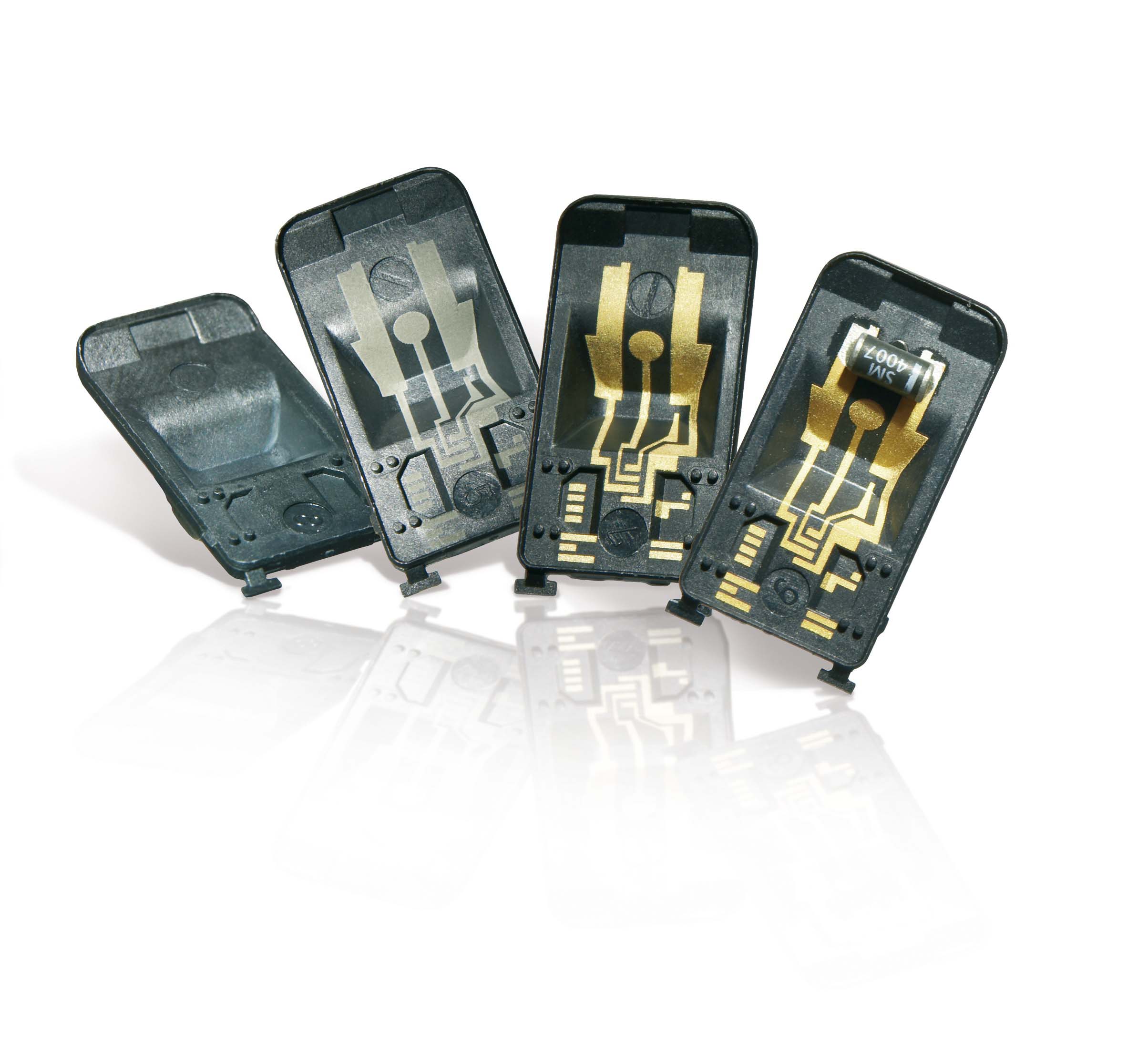
New LCP compound permits micro-components with delicate conductor path structures
Plastics specialist Ensinger is presenting a new compound for laser direct structuring (LDS): TECACOMP LCP LDS 1049426 black, based on a Liquid Crystal Polymer (LCP), is designed for thin-walled 3D MID components with very fine conductor paths. The innovative material is particularly suitable for high-frequency applications in the fields of industry automation, electronics (consumer, networks) and the automotive sector.
For more than ten years now, Ensinger has been developing high-temperature compounds for three-dimensional micro-components with conductive structures (Molded Interconnect Devices, MID). “The requirements being placed on integrated electronics components are increasing: On the one hand, installation spaces are getting smaller, while on the other hand, more and more functions are having to be accommodated even on micro-components. The mobile phone standard 5G is also increasing the frequency requirements for circuit carriers”, says Thomas Wallner, Head of Sales and Marketing of Compounds at Ensinger. “Our new compound based on a LCP permits very good fine pitch performance and metallisation that
is not too rough. Both these things are basic prerequisites for high-frequency applications. TECACOMP LCP LDS is also reflow-solderable up to 260°C, and this property profile gives it an important edge on the market.”
The innovative filler concept of the new compound increases the reliability of the conductor structures when exposed to varying stresses of a climate-related or mechanical nature. The first achievement is a low level of moisture absorption, and the second an adapted coefficient of thermal expansion (CTE) comparable to that of copper. Mineral fillers (< 10 μm) permit very fine conductor path structures, so that very narrow pitch widths (conductor path width plus the space in between) of less than 70 μm are made possible in 3D.
TECACOMP LCP LDS 1049426 black stands out for good dimensional stability and rigidity. Liquid crystal materials have a particularly low melt viscosity. In other words, they are fluid when molten and hence particularly suitable for making delicate components with thin walls.
The thermally conductive substrate can dissipate the heat loss in a targeted manner (thermal conduction capacity approx. 2 W/mK in-plane), as a result of which the lifespan of electronic components increases. A low heat capacity ensures short injection moulding cycle times. Tool construction becomes simpler thanks to the low moulding shrinkage. Furthermore, continuous bonding of the chemical-resistant and flame-retardant material by means of laser drilling is possible.
Comprehensive advice
Three-dimensional circuit carriers made from high-temperature plastics combine electrical and mechanical functions in one component and thereby permit smaller, lighter and more affordable components than conventional circuit boards. Laser direct structuring is a complex process and requires know-how from a wide variety of areas – from injection moulding through to electronics, laser activation and metallisation. Ensinger advises customers not only with the selection of polymers, fillers and additives but also throughout the entire production process.
Further information:
ensingerplastics.com/en/compounds/laser-structuring
The Ensinger Group is engaged in the development, manufacture and sale of compounds, semi-finished
materials, composites, finished parts and profiles made from engineering plastics. To process the thermoplastic
engineering and high-performance plastics, Ensinger uses a number of production techniques, such as extrusion,
machining, injection moulding, custom casting, sintering and pressing. With a total of 2,600 employees at 35
locations, the family-owned enterprise is represented worldwide in all major industrial regions with manufacturing
facilities or sales offices.